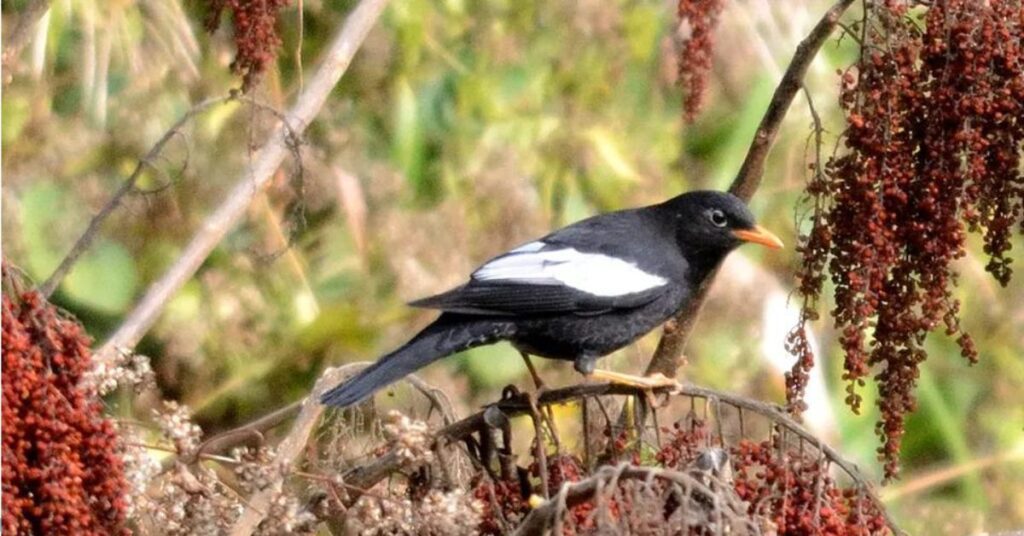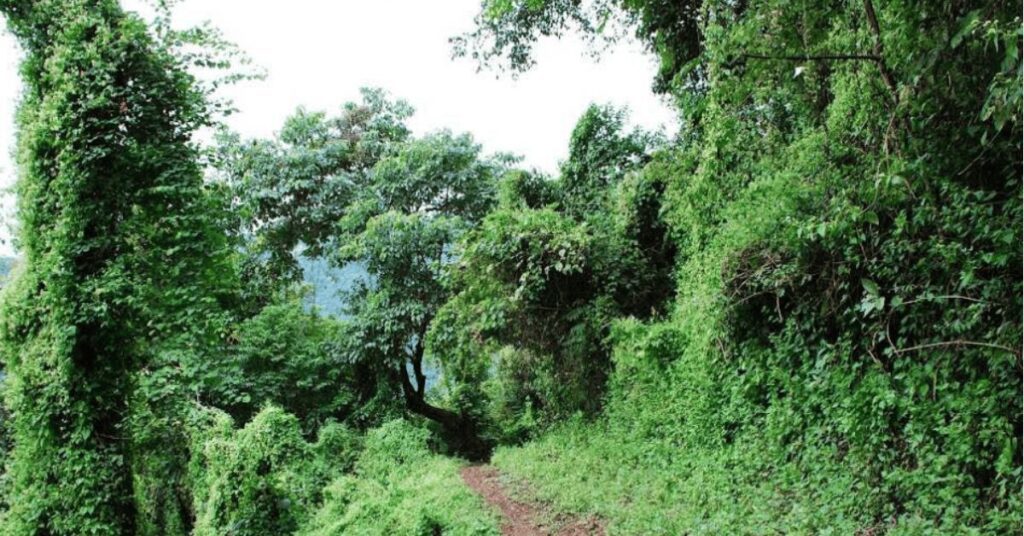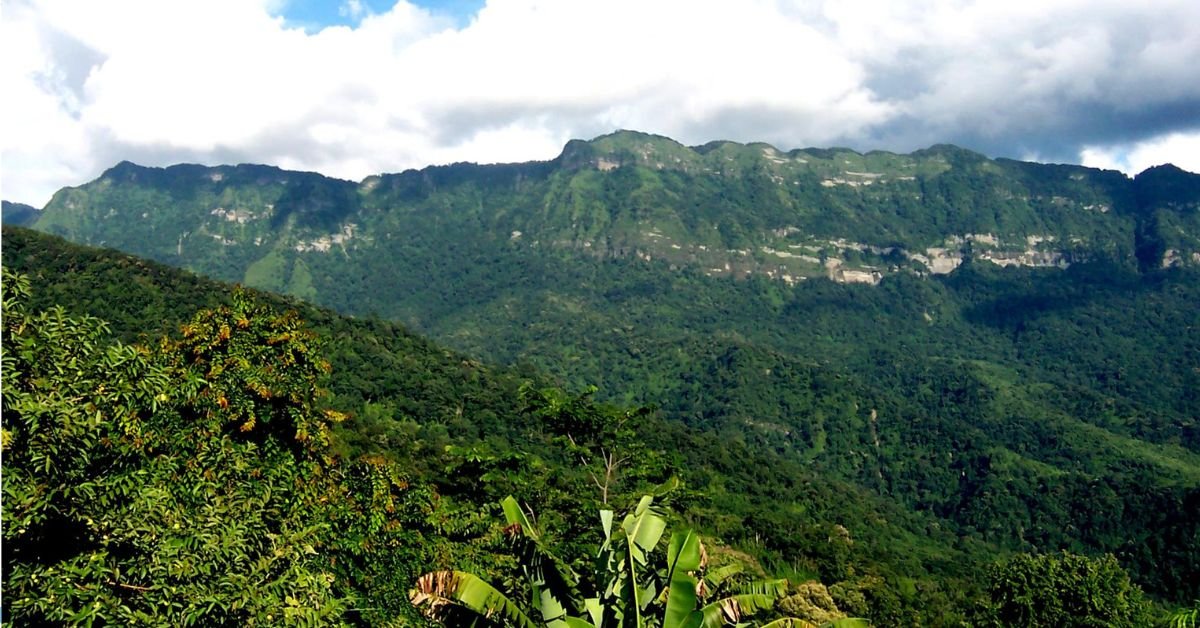Lengteng Wildlife Sanctuary is a hidden gem nestled in the rolling hills of Mizoram. This huge, green space is home to all sorts of amazing plants and animals. Imagine lush forests, gentle hills, and peaceful quiet – it’s a dream come true for nature lovers and photographers! Created in 1991, this special place sits near the Myanmar border. From thick, warm forests to cooler woodlands, there’s something for everyone. You might spot shy deer, rare gibbons swinging through the trees, or colorful birds that will amaze you.
Whether you crave adventure or just want to relax, Lengteng has it all. Hike through the woods, watch wild animals in their homes, or simply enjoy the peace. This sanctuary is a must-see for anyone who loves nature. Let’s explore this wonderful place together!
How to reach:
By Air:
The nearest airport is Lengpui Airport, about 90 kilometers away. You can fly there from major Indian cities like Kolkata and Guwahati. From the airport, hire a taxi or private car for the 3-4 hour drive to the sanctuary.
By Train:
The closest major train station is in Silchar, Assam, around 140 kilometers away. Take a taxi or bus from Silchar, a journey of about 5-6 hours.
By Road:
- From Aizawl: The capital city of Mizoram is about 120 kilometers away. You can take a taxi or private vehicle for a 4-5 hour drive.
- Bus: Limited bus service is available between Aizawl and nearby areas. Check schedules before you go.
Local Travel:
Hiring a local guide can be helpful for transportation and information about the sanctuary.
Best time to visit:
Winter (November to February)
Winter is the perfect time to spot wildlife. It’s cooler, animals are more active, and the plants are thinner, making it easier to see them. Expect nice days with temperatures between 10°C and 20°C and chilly nights. It’s usually dry, great for hiking and exploring.
Spring (March to May)
Spring is lovely with blooming flowers everywhere. The weather is still mild, but it starts to get warmer. This is a good time for birdwatching as many birds arrive. It’s best to visit early in the spring before it gets too hot.
Monsoon (June to September)
The rainy season makes it tough to get around because of mud and possible floods. The forest looks beautiful and green, but wildlife spotting is harder.
Autumn (October)
October is a good time to visit. The rain is starting to stop, the weather is cooling down, and the forest is still green from the rainy season. You have a good chance of seeing wildlife.
Attractions:
Diverse Wildlife:

Lengteng Wildlife Sanctuary is a special place filled with amazing animals. You might see shy deer that make funny sounds, and cool apes called hoolock gibbons. There’s even a beautiful but sneaky leopard that lives there!
Bird lovers will be in heaven with over 100 different kinds of birds. You could spot a brightly colored pheasant called a Blyth’s Tragopan or a stunning bird with red head, the Red-headed Trogon. Seeing these animals in their own home is an unforgettable experience and a reminder of how amazing nature is.
Scenic Trails:

Lengteng Wildlife Sanctuary is a special place filled with amazing animals. You might see shy deer that make funny sounds, and cool apes called hoolock gibbons. There’s even a beautiful but sneaky leopard that lives there!
Bird lovers will be in heaven with over 100 different kinds of birds. You could spot a brightly colored pheasant called a Blyth’s Tragopan or a stunning bird with red head, the Red-headed Trogon. Seeing these animals in their own home is an unforgettable experience and a reminder of how amazing nature is.
Flora and Fauna:

Lengteng Wildlife Sanctuary is not just about animals; it’s a world of amazing plants too! From thick, warm forests to cooler woodlands, you’ll find all sorts of greenery. Some plants are even used as medicine!
These plants help keep the whole place healthy, and the animals love it here. The way the sunlight shines through the leaves makes it look like a beautiful painting that changes with the seasons. If you love plants, this place is a dream come true!
Local Experiences:
- Savor local flavors: Enjoy traditional Mizo dishes like bamboo shoot stew and rice cakes.
- Experience vibrant culture: Participate in colorful festivals like Chapchar Kut and Pawl Kut.
- Discover local crafts: Purchase unique handmade items at local markets.
- Immerse in village life: Visit nearby villages to understand Mizo traditions.
- Enjoy traditional performances: Watch captivating Mizo music and dance shows.
- Learn from the elders: Listen to fascinating folklore and legends.
- Explore herbal wisdom: Discover the healing power of local plants and remedies.
Travel tips:
Plan ahead: Obtain necessary permits and consider hiring a local guide.
Check the weather: Be prepared for different weather conditions, especially rain.
Pack wisely: Bring comfortable clothing, sturdy shoes, and essential medical supplies.
Capture the moment: Don’t forget your camera and protect it from the elements.
Respect the locals: Adhere to local customs and ask permission before taking photos.
Be prepared: Carry enough cash and supplies, as facilities might be limited.
Stay safe: Follow park guidelines, especially when hiking, and inform someone of your plans.
Protect the environment: Leave no trace, avoid disturbing wildlife, and dispose of waste properly.
Conclusion
Lengteng Wildlife Sanctuary, a pristine haven in Mizoram, invites nature lovers on an unforgettable adventure. Discover a world of diverse wildlife, including the elusive hoolock gibbon, as you trek through lush forests. Capture breathtaking views from Lengteng Peak and immerse yourself in the vibrant Mizo culture. Respect the environment and contribute to preserving this natural treasure. Let Xplro.com guide you on an enriching journey to Lengteng Wildlife Sanctuary.
FAQs
1. What is the optimal time to visit Lengteng Wildlife Sanctuary?
- The ideal time to visit Lengteng Wildlife Sanctuary is from November to February when the weather is cooler and more comfortable for exploring. Spring (March to May) is also favorable for witnessing blooming plants and migratory birds. Avoid the monsoon season (June to September) if possible, as heavy rains can disrupt travel and wildlife sightings.
2. How can I obtain the necessary permits to enter the sanctuary?
- To visit Lengteng Wildlife Sanctuary, you will need to acquire permits from the Mizoram Forest Department or local administrative offices. It is recommended to apply for these permits well ahead of your planned visit to ensure smooth entry.
3. Are there options for guided tours in the sanctuary?
- Yes, guided tours are available and are a great way to explore the sanctuary. Local guides offer valuable insights into the region’s wildlife and trails, and can greatly enhance your visit by ensuring you get the most out of your experience.
4. What types of wildlife can I expect to see in the sanctuary?
- Lengteng Wildlife Sanctuary is home to a diverse range of wildlife. You may encounter animals such as barking deer, hoolock gibbons, and clouded leopards. Bird enthusiasts will also find a variety of species, including the Blyth’s Tragopan and the Red-headed Trogon.
5. What should I pack for my visit to the sanctuary?
- When visiting Lengteng Wildlife Sanctuary, pack comfortable hiking clothing and sturdy shoes. Include rain gear, sunscreen, insect repellent, and a good camera with a zoom lens for wildlife photography. Don’t forget to bring any personal medications and a basic first aid kit.
6. Are there places to stay near the sanctuary?
- Accommodations around Lengteng Wildlife Sanctuary are somewhat limited. You may need to book a stay in nearby towns or villages in advance, where basic lodging options are available. Some visitors choose to stay in Aizawl and travel to the sanctuary for day trips.
7. Can I explore the sanctuary on my own, or is a group required?
- While you can explore the sanctuary independently, joining a guided tour is highly recommended. Local guides are familiar with the area and can provide important information and ensure a safe visit.
8. What are the main attractions within the sanctuary?
- Attractions in Lengteng Wildlife Sanctuary include its diverse wildlife, picturesque trekking trails, and the scenic views from Lengteng Peak. The rich flora, including medicinal plants, adds to the sanctuary’s appeal. Engaging with local communities can also be a memorable part of the visit.
9. Is there an entry fee for the sanctuary?
- Yes, there is typically an entry fee for visiting Lengteng Wildlife Sanctuary. Fees can vary, so it is advisable to check with the Forest Department or local authorities for the latest information on charges and payment methods.
10. What safety measures should I follow during my visit?
- Adhere to all safety guidelines provided by the sanctuary. Stick to marked trails, avoid disturbing wildlife, and be cautious of potentially slippery paths, especially during the rainy season. Inform someone about your itinerary and expected return time for added safety.
11. How do I get to Lengteng Wildlife Sanctuary?
- To reach Lengteng Wildlife Sanctuary, you can fly into Lengpui Airport, which is about 90 kilometers away, or take a train to Silchar Railway Station, roughly 140 kilometers away. From these points, hire a taxi or private vehicle to reach the sanctuary. Traveling from Aizawl is also an option, with the sanctuary located around 120 kilometers by road.
12. What local customs and etiquette should I observe?
- Respect local customs and traditions during your visit. Be polite and seek permission before photographing local people. Avoid leaving litter behind and follow the Leave No Trace principles to help preserve the sanctuary’s natural environment.






